




So can you make a magazine in two weeks? Well with a little Christmas magic and great friends and supporters alike you can!
Special thanks this week goes to: Olivia, Andy1, Andy3, Stephanie, Mary, Jeremie, Savroop, Alex, Adam, Bill, Craig, Flash, Mogi [my cat], the snow, the elves, Santa, fforrde fiesta team, Jesus [Imaginary] and all the other real and fictional people I forgot to mention...
Thanks for reading and have a VERY Merry Christmas and Happy New Year...

Splicer~
forget to Breathe
Don’t forget to smile
Father Christmas dates back at least as far as the 17th century in Britain, and pictures of him survive from that era, portraying him as a jolly well-nourished bearded man dressed in a long, green, fur-lined robe. He typified the spirit of good cheer at Christmas, and was reflected as the “Ghost of Christmas Present”, in Charles Dickens’s festive classic A Christmas Carol, a great genial man in a green coat lined with fur who takes Scrooge through the bustling streets of London on the current Christmas morning, sprinkling the essence of Christmas onto the happy populace.
Pre-modern representations of the gift-giver from church history and folklore, nota bly St Nicholas and Sinterklaas, merged with the British character Father Christmas to create the character known to Britons and Americans as Santa Claus.
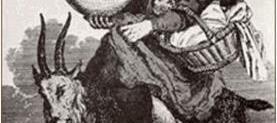
In the British colonies of North America and later the United States, British and Dutch versions of the gift-giver merged further. For example, in Washington Irving’s History of New York, (1809), Sinterklaas was Americanized into “Santa Claus” (a name first used in the American press in 1773) but lost his bishop’s apparel, and was at first pictured as a thick-bellied Dutch sailor with a pipe in a green winter coat. Irving’s book was a lampoon of the Dutch culture of New York, and much of this portrait is his joking invention.
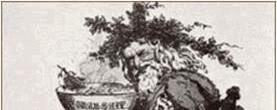
Don’t forget to smileDon’t forget to Breathe
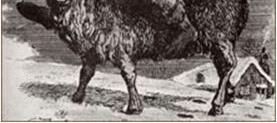
In 1821, the book A New-year’s present, to the little ones from five to twelve is published in New York. It contains Old Santeclaus, an anonymous poem describing an old man on a reindeer sleigh, bringing presents to children. Some modern ideas of Santa Claus seemingly became canon after the publication of the poem “A Visit From St. Nicholas” (better known today as “The Night Before Christmas”) in the Troy, New York, Sentinel on December 23, 1823 anonymously; the poem was later attributed to Clement Clarke Moore. Many of his modern attributes are established in this poem, such as riding in a sleigh that lands on the roof, entering through the chimney, and having a bag full of toys. St. Nick is described as being “chubby and plump, a right jolly old elf” with “a little round belly”, that “shook when he laughed like a bowlful of jelly”, in spite of which the “miniature sleigh” and “tiny reindeer” still indicate that he is physically diminutive. The reindeer were also named: Dasher, Dancer, Prancer, Vixen, Comet, Cupid, Dunder and Blixem (Dunder and Blixem came from the old Dutch words for thunder and lightning, which were later changed to the more German sounding Donner and Blitzen).
As years pass, Santa Claus evolves in popular culture into a large, heavyset person. One of the first artists to define Santa Claus’s modern image was Thomas Nast, an American cartoonist of the 19th century. In 1863, a picture of Santa illustrated by Nast appeared in Harper’s Weekly.
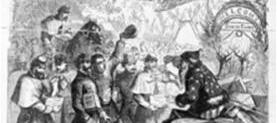
Thomas Nast immortalized Santa Claus with an il lustration for the January 3, 1863 issue of Harper’s Weekly. Note that Santa is dressed in an American flag.
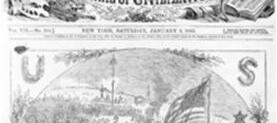
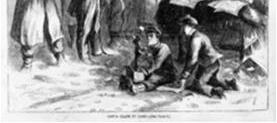
The story that Santa Claus lives at the North Pole may also have been a Nast creation. His Christmas image in the Harper’s issue dated December 29, 1866 was a collage of engravings titled Santa Claus and His Works, which included the caption “Santa Clauss ville, N.P.”

A color collection of Nast’s pictures, published in 1869, had a poem also titled “Santa Claus and His Works” by George P. Webster, who wrote that Santa Claus’s home was “near the North Pole, in the ice and snow”. The tale had become well known by the 1870s. A boy from Colorado writing to the children’s magazine The Nursery in late 1874 said, “If we didn’t live so very far from the North Pole, I should ask Santa Claus to bring me a donkey.”
Don’t forget to Breathe
Don’t forget to smile
The idea of a wife for Santa Claus may have been the creation of American authors, beginning in the mid-1800s. In 1889, the poet Katherine Lee Bates popularized Mrs. Claus in the poem “Goody Santa Claus on a Sleigh Ride”.
L. Frank Baum’s The Life and Adventures of Santa Claus, a 1902 children’s book, further popularized Santa Claus. Much of Santa Claus’s mythos was not set in stone at the time, leaving Baum to give his “Neclaus” (Necile’s Little One) a wide variety of immortal support, a home in the Laughing Valley of Hohaho, and ten reindeer— who could not fly, but leapt in enormous, flight-like bounds. Claus’s immortality was earned, much like his title (“Santa”), decided by a vote of those naturally immortal. This work also established Claus’s motives: a happy childhood among immortals. When Ak, Master Woodsman of the World, exposes him to the misery and poverty of children in the outside world, Santa strives to find a way to bring joy into the lives of all children, and eventually invents toys as a principal means.
Images of Santa Claus were further popularized through Haddon Sundblom’s depiction of him for The Coca-Cola Company’s Christmas advertising in the 1930s. The popularity of the image spawned urban legends that Santa Claus was invented by The Coca-Cola Company or that Santa wears red and white because they are the colors used to promote the Coca-Cola brand. Historically, Coca-Cola was not the first soft drink company to utilize the modern image of Santa Claus in its advertising—White Rock Beverages had already used a red and white Santa to sell mineral water in 1915 and then in advertisements for its ginger ale in 1923. In fact, Santa Claus had already appeared in red and white on the cover of Puck magazine at the start of the century.
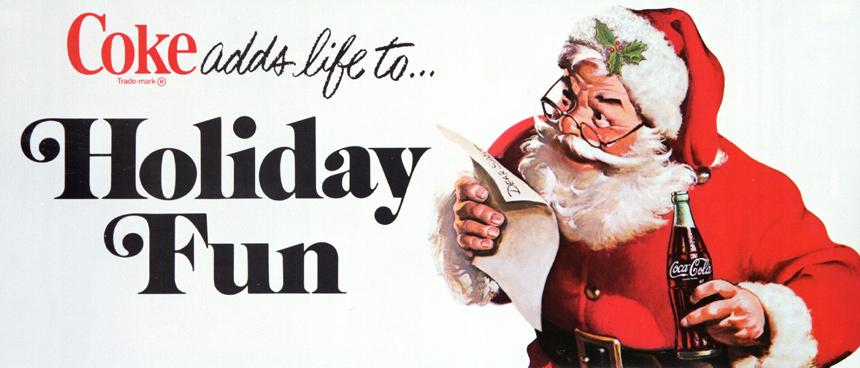
In some images from the early 20th century, Santa was depicted as personally making his toys by hand in a small workshop like a craftsman. Eventually, the idea emerged that he had numerous elves responsible for making the toys, but the toys were still handmade by each individual elf working in the traditional manner.
Don’t forget to Breathe Don’t forget to smile
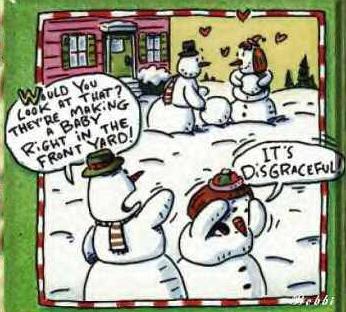
Elves are mythological creatures, works of fantasy. But there is a hard core reality to them that is based in scientific fact. After examining what an elf IS, it is easy to see that there is a factual component to the myths. Like Schliemann finding Troy by reading Homer, we can find the real elves by examining the myths with a careful eye.
Elves are a mythological and anthropological artefact descended from Norse myths and folktales. They were originally very crude and ambiguously drawn fertility spirits and nature spirits. They evolved through their dispersion through Danish, Finnish and Germanic cultures into predominantly disease spirits, although these elves were most often the cause of minor irritations, like rashes and such. The primary trait of the original elves, as shown in the etymology of the word, was mainly a paleness of complexion. They were human, by and large, immortal, lithe and eternally youthful, but always pale. And most important, because it really isn’t something intuitively true of mythological fertility or nature spirits in general, they love music and especially dance.
In time, elves became diminutive even as their role changed from the powerful and authoritative creatures of myth, to the petty and insignificant creatures of folklore. As they seemingly lost power and fame, they grew tiny and cute. After a time they became simple mischievous pranksters who could be bought off with some butter or warded with scary looking symbols. But they still retain their love of dance and mu sic, even, in Scandinavian legends, being capable of dancing a man to death.
Don’t forget to Breathe Don’t forget to smileIn modern times, beginning perhaps with Lord Dunsany and George MacDonald, and culminating in the J.R.R. Tolkien, elves were revisited and re-invigorated to their first status. The elves of Dunsany and MacDonald are quite different from the firefly faer ies that populated children’s books. And Tolkien’s elves are sober and sombre beings, wise and terrible. Tolkien is responsible, as no other man can claim, for bringing the elves back to their natural and original status as mythological powers. Their musical talents are highlighted in Tolkien’s works, especially in their love for poetry.
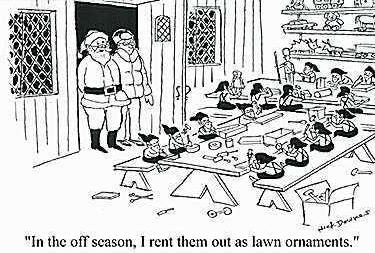
So, what about the real elves? Well, strangely enough, human beings missing the gene for elastin, a deficiency called Williams Syndrome, which has symptoms that are very interesting indeed. Children with Williams syndrome display physical traits that are similar to what the myths portray as Elvin. They have pointy chins, upturned noses, long upper lips, wide mouths, full lips, small teeth. They have predominantly small frames and have trouble with low birth weight and low weight gain. Those with Williams Syndrome who have green or blue eyes often have an unusual starburst pattern to their iris. Their typical hypocalcemia can cause hyperreflexia, or invol untary movement, as well as periods of crankiness caused by muscle pain. Those with Williams Syndrome also have a sensitivity to sound at certain frequencies, of ten displayed as an overly-emotional response. In addition, children with Williams Syndrome display very particular mood and emotional traits. They are generally very friendly, outgoing, and sweet.
Now, it is a little stretch of the imagination to see in these symptoms, if coloured by culture and superstition, plus a little old fashioned folk-exaggeration, the origins of a race of elves, perhaps changelings exchanged for human children. That they respond differently to music, that their appearance is so startling, seems very much more than coincidence. Is it likely that such a rare genetic condition was prevalent enough in this region to be misidentified as a supernatural race distinct from homo supersti tiens? That might make a good thesis for a promising student in genetics.
by John DeveraDon’t forget to Breathe
Don’t forget to smile
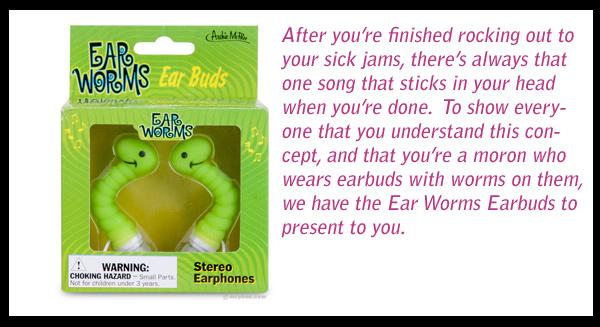
The power of rhyme and prose, that melody from a long lost past. What powers do they hold and can we weald them for good... we know it can be done for evil or at least commercial gain... Simply recollect the coca-cola advert running through you Christmas filled head and tell me this, if you the song have you sung it in your head already -”Holi days are coming, holidays are coming, holidays are a coming...Always Coca-cola!” cue the cola truck or dancing polar bears depending on your age...
A haunting melody like this [or earworm] is a piece of music that sticks in one’s mind so that one seems to hear it, even when it is not being played. Other phrases used to describe this include musical imagery repetition and involuntary musical imagery. The phenomenon is common in normal life and so may be distinguished from brain damage which results in palinacousis. Although, people with obsessive-compulsive disorder (OCD) are more likely to report being troubled by ear worms – in some cases, medications for OCD can minimize the effects.
Don’t forget to Breathe Don’t forget to smile‘Earworm’ are those songs/tunes which stuck in your head and commence chewing your brain. This is also called ‘Stuck song syndrome’ or ‘Hard-to-shake melody’. In Germany, this type of song is known as an “ohrwurm” - an earworm - and typically has a high, upbeat melody and repetitive lyrics that verge between catchy and annoying. Earworm also refereed as ‘stuck song syndrome (Levitin, 2006), ‘involuntary musical imagery’ (INMIs; Liikkanen, 2008), ‘brainworms’ or ‘sticky music’ (Sacks, 2007).

According to research by James Kellaris, 98% of individuals experi ence earworms. Women and men experience the phenomenon equally often, but earworms are more likely to last longer for women and to irritate women more than they irritate men.
So is it any wonder that one of my favourite games is the involuntary spreading of earworms at my place of work? I begin as early as possible for the widest ranging effect and pick a thoroughly annoying earworm for the day, something like “Hi ho, Hi ho, it’s off to work we go”... I find it works best if you just whistle [but that could be in dicative of my voice], starting softly and building into a fill whistling orchestra! Then sit back and watch your worm travel from person to person, office to office. Go for total building domination by the end of the day and don’t forget to smile, a nice cheeky one...
So is this for the power of good? Perhaps not, but it does bring a few laughs and it’s a nice little way to meet fellow colleagues.
Don’t forget to Breathe
Don’t forget to smile
I think the key to understanding and utilising this device for good would be to analyse the type of songs that do get stuck up there. Cur rent research points the finger at small little 15-20 second “ditties” or very catchy and somewhat annoying songs. Im my lifetime thus far this has been in the form of advertisements [hence coca-cola], but I think it goes a little deeper than this; It appears to be more temporal children of the 80s [myself] are generally stuck in the 80s musically when it comes to the songs that warm the heart and stay in the mind. As are children of the 90s, and so on.
So why am I or any of us stuck in the 80s [at least with the music that moves my soul]? My formidable years perhaps, but what make them special and character binding/shaping? This I think also links with the old adage of our parents saying “Music was better in my day!” and its true the older I get I start to think the same. So this gives me a clue as to why we are tethered to this music, our music. We are a part of it; the culture of the music, the musicians that wrote and performed the music are, like us, grown and raised within the same environment the same food and also the same comforting world we used to live in. Like your favourite food or happiest memory; music however can return you to almost any event in time [currently running only backwards, but New Splicer is working on a forward time musical movement event; look out for it sometime]... Don’t forget to Breathe Don’t forget to smile
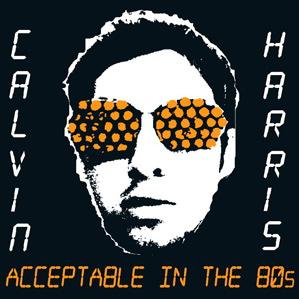
Music gains its power from its ability to take us back to another time and moment and it is us that creates the association of music to each event; the more memorable the music, the more simple and catchy the easier the leap into bliss. So when we say “Music used to sound bet ter in my days” what we actually mean is “I can only understand life, my life, through my own eyes and in my own time”... Obvious, when we stop to think perhaps or when we can get that abrading Rick Astley song out of our heads!
“Never gonna give, Never gonna give”
Don’t forget to Breathe
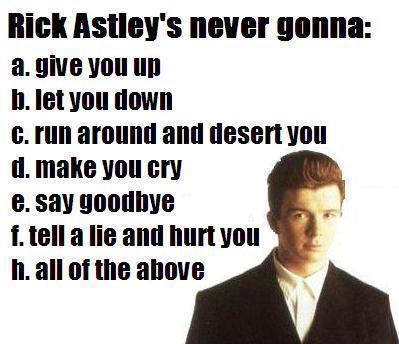 Don’t forget to smile
Don’t forget to smile
‘Tis the season to regress to an innocent time, full of smiles and excitement. If you were lucky and I hope you all were are depending on how your looking at this now, for what aged eyes you have. I like to travel back and re-live smiles; building the Xmas tree 3 months early [not done this is a while, been too busy with adult life]... Generally getting into the Christmas spirit which still excites.
So on to snow, essentially crushed ice, but more delicate and beautiful. Natures little gems, since a child I have been fascinated with snowflakes, in my eye the cheapest diamond like gem money can buy and anyone can create. Ascetically and physically alluring from both a scientific and natural perspective... I guess it’s in the details of the object, from the very small chaotic and ordered molecular structures to the overall cold, icy feel while being soft enough to throw. I have never really experienced the extreme cold so I am not against snow from the out set, but will consider that it is not the most cosy or item akin to survival. It does however beckon in change and tempest, fuel the seasons of change and bring in Christmas. A sign that fun things are just round the corner and it’s time to play. I always associate snow with play, days off were almost pre-requisite to snow...
I believe the key to understanding snows real charm is surprisingly biological and scientific. Its all about media (this means something different to the scientists, when I say media here I refer to the state of an environment, the very essence of what we live off and play in. For example, for children in the UK the usual media is a mix of rain, sun and grey clouds. Dry or wet dusty streets and green fields, red busses and colourful cars. Birds, people and watery lakes... The food we eat is the same, a mix or warm and cold, liquid and not... This is the media or environ ments of our childhood. But come winter and the snow, all this changes... Recall that winter broth, warm, warming and providing more than just sustenance. Food takes on a whole new angle; survival and substance are enhanced [even from our comfortable homes].
From an evolutionary perspective the body is ready for a wintery onslaught, the desire to hunt and be satiated, enhanced sharpening of all our senses to the envi ronment and resources around us. Food doesn’t taste better we just taste it more, or at least with a new dimensional taste. The environment we once played in is now a uniform white glow, gone are the birds, gone is the green of nature and we are surrounded by something alien, something surreal. So maybe its just the fascination with the new and shiny and we are all surface aesthetic creatures [perhaps by evolution] or maybe we just like snow!?
Don’t forget to Breathe
Don’t forget to smile
I only have one story of icy misadventure, not even involving yellow snow! No, this was the white stuff although a tad old and we all know what happened to old snow after a few very cold days... Ice... I was at school and was fortunately a witness to an event that one shouldn’t laugh at but feels compelled to do so, a real slapstick mo ment except on recollection with the real danger for physical danger... A group of the oldest kids in my school thought it a good idea to empty a bin full of this old snow, from about one story building height onto an unsuspecting student. Perhaps they as sumed the bin was full of snow, perhaps they were assholes either way the inevitable happened and fortunately the kid was ok. It was the moment of the act that sticks with me; something like comedy as I was simply a silent observer (I thought the bin was full of snow). As the kid passed underneath the bridge-like crossover the contents of the bin descended, in one big icy lump. It cracked in half like something from a car toon, a whole or now two halves of an icy/snowy bin shape hit the kid square on the head and split in two. The kid was a little shocked, as were most of us, not expecting a lump of ice broken on his head... I wonder where he is today, is he contributing to global warming in a long running ironic quest for justice? Or just like the rest of us enjoying the snow?
Or just maybe it’s the fact that we are staring at the key fractal equation that therein lies the secrets of the order and construction of the universe... This needs further ex ploration perhaps in another issue...

I’m impressed a whole article passed and not one snow pun, although I am itching to say a famous quote from the wizard of oz... But I will leave that for your minds...
Don’t forget to Breathe
Don’t forget to smile

Don’t forget to smile
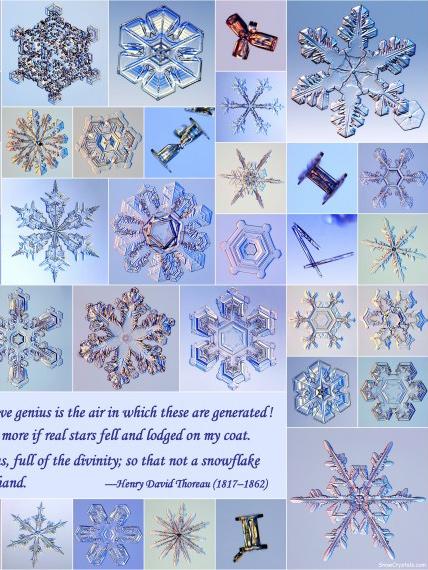

The mixture of the mind, a beautiful vessel for the cooking of ideas. But where do they come from, what is creativity in its purest sense? Well like the simplest of meals you can get good taste from the combination of known ingredients. An easy form of creation, what I am in terested in goes beyond this, something absolutely unique, not stolen from nature, not a rehashed old idea but novel creation.
As a scientist this is a very rare event as we do indeed stand of the shoulders of, not giants, but the countless men and women who strived for a better understanding of the world and all contributed. Perhaps as time goes on it becomes harder to recreate that penicillin eureka moment, where by nothing before lead to what was to come. I’m starting to believe that this sort of creativity actually comes from those on the borderlines of insanity or at the very least normality. To create that idea so different from the normal we cannot think normally, to make the jumps of a riddle from point A to point Z requires something almost magical. And as it is that season, let’s see if we can find that magic and perhaps a key to creation [although I must warn you it comes with a heavy cost].
The truth is that genius is 99% effort and the other 1% can be divided up into luck, chance, insanity, logic amongst a hundred other ways of making universal jumps around the world. So as most of you already know how to jump from previous editions of New Splicer ill skip straight to the point... No skipping required...
Don’t forget to Breathe
Don’t forget to smile
I’m lucky in my science, I have had quite a few sexy [as sexy as sci ence can be] discoveries, slightly too frequent to be just luck and I was recently asked what it was about me that made these things happen? [Again I claimed at least 99% was due to hard work and insomnia over the last few years]. More hours working means more chance of success, still I’m not the only one who works intensely [and I’m not even sure that’s the best description for it, more I work efficiently]. But as you know, I also write a magazine, which takes time, I’ll let you and the future decide on the merits and “genius” of New Splicer; I will say this I had to delve into insanity from time to time for inspiration.
I believe it is this temporary [perhaps] insanity that has allowed me to access what currently appears to be a limitless pool of, well, crap that most would probably avoid or not even think about writing about. Although, I do cover some common ground I try to push that and by definition myself beyond what even I expect; which by nature I cannot even predict myself where I will end up. So how to get there?
Don’t forget to Breathe
Don’t forget to smile
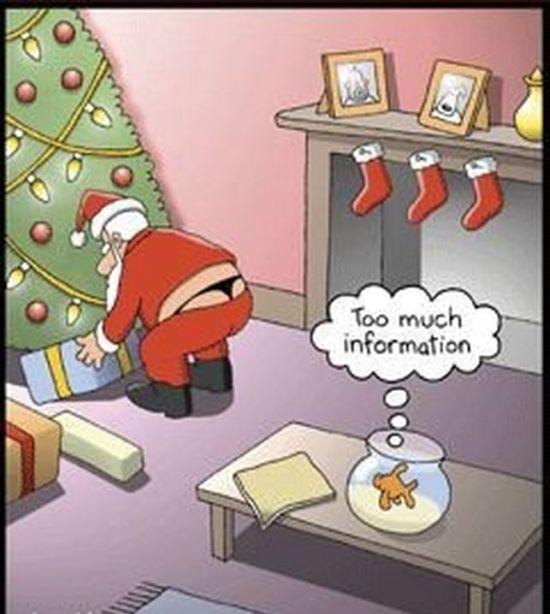
It all started with a painful memory, now lodged in the past as both tether and guide, the memory is not important but the need to move away from it was. So I travelled, while existing and not existing in the real world; the way I write can only be a reflection of me [so that will always be mine]. I had always had the desire to write but the drive was not there, that drive came in the form of a second rose tinted memory. It was about this time last year when I decided to start writing New Splicer, as nothing more than a one off Christmas issue to give to my friends and family in place of Christmas cards. Inspired by a girl who gave me my first Jasper Fforde novel “The Eyre Affair”, within this book was a world free from conditioning, the humour struck a chord with my own and I was a fan. Meeting Jasper Fforde in person now has been an equally inspiring experience as he comes at life and comedy much in the same way as myself, but quite simply I was sold with the memorable quote “There is no distance I wouldn’t travel for a bad joke”....
So I began my journey, neither dark nor light place left unturned; every story ever told could be observed in another light and although generally absurd there is always a grain or two of logic and methodi cal leaping around the abstract that gives it a beautiful sense of believ ability. The first issue approximately a year ago today began with the resurrected Dodo, Mr Ffordes idea, my profession an insane desire and drive to find the odd and humorous - New Splicer was born. How ever, I was not finished, there were still worlds to discover and I still needed a reason to smile. So I wrote, about my dreams of dinosaurs; yes I am happily abnormal but I think in the end we all just want to smile...
In truth we all want to believe...
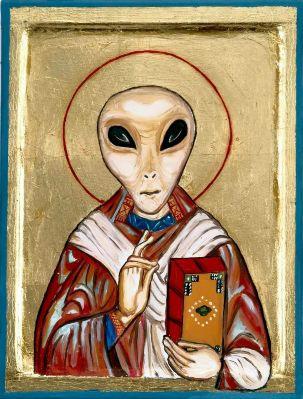
Don’t forget to Breathe
Don’t forget to smile
1. Who was the first British monarch to broadcast a Christmas message to the nation?
2. Child star Jimmy Boyd sang which hugely popular 1950’s Christmas song, which was ini tially banned by the Catholic Church in Boston because it supposedly mixed sex and Christ mas?
3. Who banned Christmas in England between 1647 and 1660?
4. On which date is Epiphany celebrated in the traditional Western calendar?
5. Who are the four ghosts in Charles Dickens’ A Christmas Carol?
6. What liqueur goes into making a ‘snowball’ cocktail?
7. What is the English title of the carol written in 1818 by Austrian priest Josef Mohr originally called Stille Nacht?
8. The Nordic countries (Denmark, Sweden, Norway notably) tend to celebrate Christmas chiefly on which date?
9. Which US state in 1907 was the last to declare Christmas a legal holiday?
10. Presepe in Italy refers to what Christmas tradition?
11. Christmas Crackers is cockney rhyming slang for which part of the male anatomy?
12. What is the popular name for little baked sausages wrapped in rashers of streaky bacon?
13. Which of the Wise Men was said to have brought the gift of gold for the baby Jesus?
14. The 1954 movie White Christmas was the first to be made using what new Paramount film format?
15. Which river did George Washington cross on Christmas night in 1776 in the American Revolutionary War?
16. What changed in 1752 which caused England to have a White Christmas less frequently thereafter?
17. Traditional in Germany at Christmas, what sort of food is stollen?
18. According to the UK National Meteorological Office what year (prior to 2007) was the last White Christmas in Britain?
19. The Christmas period of 1813-14 saw the last what in London?
20. How many gifts are given in total in the song The Twelve Days of Christmas?
21. The words “Myrrh is mine, its bitter perfume breathes of life, of gathering gloom...” come from which Christmas carol?
22. Christmas Island in the Indian Ocean is a territory of which country?
23. Which diarist noted on 25th December 1662, “(Christmas Day). Had a pleasant walk to White Hall, where I intended to have received the communion with the family, but I have come too late...”
24. The USA’s official National Christmas Tree is in which National Park?
25. John Callcott Horsley designed what first commercial Christmas item in 1843?
26. In Victorian England what people were popularly called robins because of their red uni forms?
27. Which popular poem was alternatively known as A Visit from St Nicholas?
28. Which token vegetable is often included in the ingredients of a Christmas pudding?
29. What animal is Snowball in George Orwell’s book Animal Farm?
30. Yorkshireman William Strickland is believed to have brought the first what to Britain from North America in 1526?
Don’t forget to Breathe
Don’t forget to smile
Ok so let’s get straight down to it... Prostitution [well with a title like HO HO HO what did you expect!]...
The selling of one’s body or even worse one’s mind [depending on your currency]; I will attempt to keep this festive but would not want to sell out... Or at least Santa pays me well to indorse coke-a-cola and the big red fellow image... I would blame Santa for prostituting his image, but someone is clearly abusing our trust of the joy and happiness that this season brings to young and old alike. But is it all a con? Is everything a commodity to be sold in the attempt to buy joy, affection and a few minutes of silence from children? I’m not a sync of Christmas, I am one of the few that do enjoy the festive spirit and getting caught up in the merriment, but I sometimes think I am allowing myself to fall into unawareness or oblivion to fully enjoy in an almost Freudian psychological sense of fun. Not that this is a bad thing, I guess as long as you are aware of your actions you are free to make them. And there is something innocent and sweet in watching the people [adults and children] that are truly oblivious to the constructed Christmas.
So is good will to all man free? And is free will to all men good?
I guess it depends on what you like and what people are like; how ever, in the end it’s all about freedom of choice. We are free to buy into Christmas and we are free not to; I like to swim between both worlds, sink between knowledge and awareness. Knowing Christmas and the act of giving is both a good cause and tool for capitalism is a start, but also knowing that I do love to give gifts and see the smiles they cause [even this is not altruistic, I say as I smile... woops].
A man asks his partner “What is the purpose of reindeer?”
She replies “It makes the grass grow?”
Don’t forget to Breathe
Don’t forget to smile
It’s easy to get caught up in the anti- commercialism movement of Christmas [I didn’t really want to use the word commercialism as It’s too obvious and unfortunately unavoidable] but simply don’t! I spend what I wish to spend and have the choice to buy or not; a gift given for the sake that one has to get a gift is not worth giving. So, enjoy Christmas, use commercialism and have fun! Sometimes the best gifts come in old shoe boxes full of sawdust!
In the end I think it’s good to fall - in love, in bliss, in to oblivion just don’t forget to breathe once in a while.
Don’t forget to smileDon’t forget to Breathe
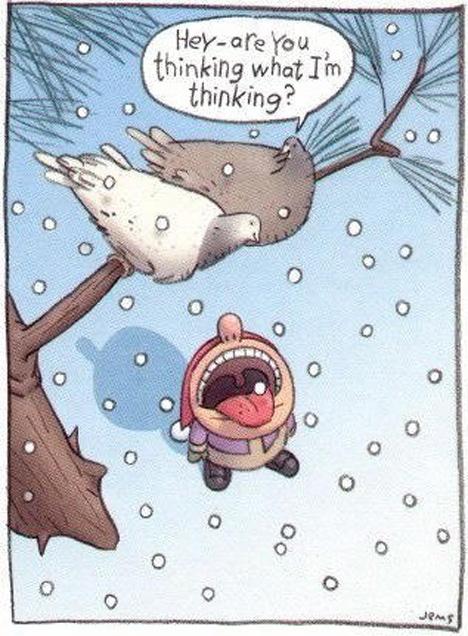

The four stages of life: You believe in Santa Claus; You don’t believe in Santa Claus; You are Santa Claus; You look like Santa Claus.
Romeo: What would it take to make you kiss me under the mistletoe?
Juliette: An anaesthetic.
How come you never hear anything about the 10th reindeer “Olive”? Olive? Yeah, you know, “Olive the other reindeer, used to laugh and call him names!”
Don’t forget to Breathe
They ride an icicle.
What’s furry and minty?
A polo bear.
Don’t forget to smile
Why was Santa’s little helper depressed? He had low ELF esteem!
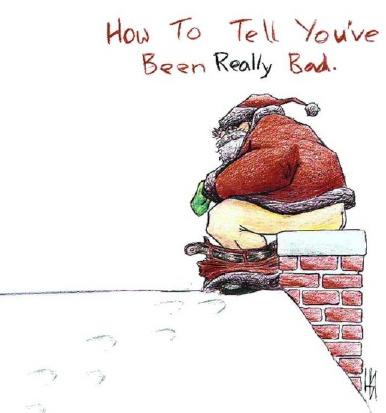
Why do all the other reindeer have brown noses?
Because they cant stop as quickly as Rudolph!
What’s white and goes up?
A confused snowflake.
Who hides in the bakery at Christmas?
A mince spy.
Q: What’s Mary short for?
A: She’s got no legs.
What do you call a penguin in the Sahara desert?
Lost.
On which side do turkeys have the most feathers?
The outside.
Don’t forget to smileDon’t forget to Breathe
1. George the Fifth (in 1932)
2. I saw Mommy kissing Santa Claus
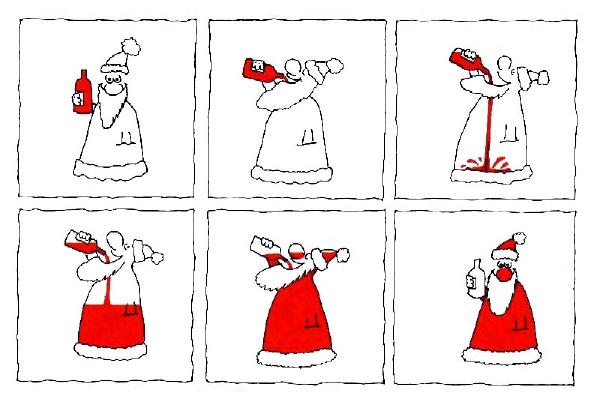
3. Oliver Cromwell
4. 6th January
5. Christmas Past, Christmas Present, Christmas Yet to Come, and Jacob Marley
6. Advocaat
Silent Night
24th December
Oklahoma
Nativity scene (literally meaning crib)
11. Testicles (see knacker origins - related to the very old word for a horse slaughterer.)
12. Pigs in blankets
Melchior
14. VistaVision
15. Delaware
Don’t forget to Breathe
Don’t forget to smile
16. The calendar (the English adoption of the Gregorian calendar, re placing the Julian calendar, shifted Christmas day back 12 days - and all the other days too of course - 11 days were skipped in 1752 and a further day in 1800.)
17. Cake 18. 2004
19. Christmas Fair on a frozen River Thames (known as a Frost Fair) 20. 364
21. We Three Kings of Orient Are (composed by Rev John Henry Hopkins, 1857)
Australia 23. Samuel Pepys (pronounced ‘peeps’)
24. King’s Canyon National Park, California (a giant sequoia called The General Grant)
Christmas card 26. Postmen
‘Twas The Night before Christmas
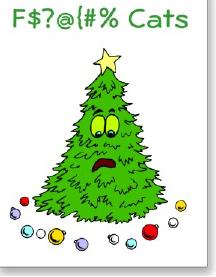
Carrot (vegetables were in earlier times used in making Christmas puddings)
29. A pig 30. Turkey
Don’t forget to smileDon’t forget to Breathe
And hopefully snow, yes as of December 21st New Splicer is heading to the land of the Scots!
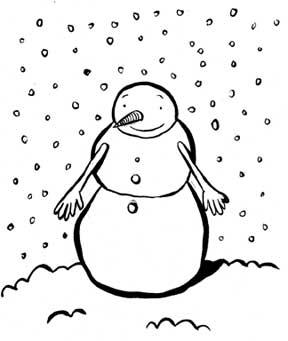
To explore haggis and the loch ness monster [one and the same?]... I will attempt to communicate with the locals, observe the culture and look under every nook, cranny and caber to find the secrets and gems of the land to bring back to you all!
Don’t forget to Breathe
P.s. Be naughty, save Santa the trip!
Don’t forget to smile
Till then; A need tae practice ma Scots...
Topic of the month:
Did Robert Burns Books?...
Sir William Wallace

Ellerslie...
Tossing the Caber
Dolly The Sheep - A Journey home... Haggis Vs The Sausage... and much more! Don’t forget to Breathe Don’t forget to smile
 Don’t forget
Don’t forget
forget to smile
forget your Christmas Toast this year!